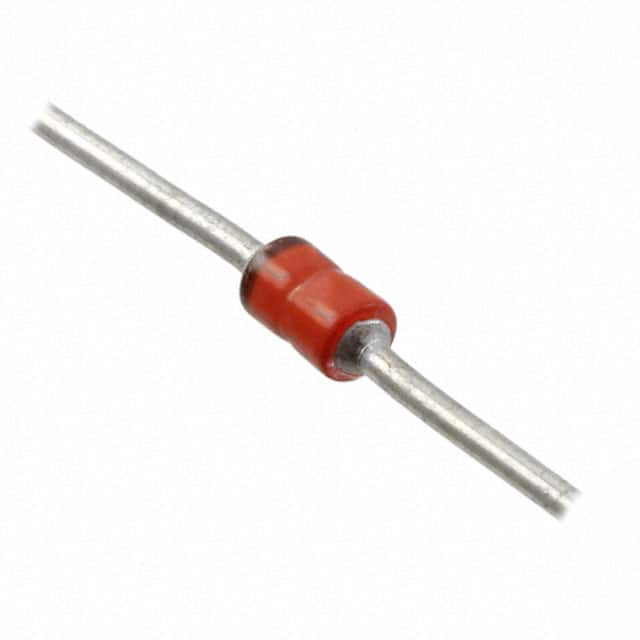Viz Specifikace pro podrobnosti o produktu.

MAP4KE110CAE3 Product Overview
Introduction
The MAP4KE110CAE3 belongs to the category of semiconductor devices and is commonly used as a protection component in electronic circuits. This entry provides an overview of its basic information, specifications, pin configuration, functional features, advantages and disadvantages, working principles, application field plans, and alternative models.
Basic Information Overview
- Category: Semiconductor device
- Use: Protection component in electronic circuits
- Characteristics: High voltage tolerance, low leakage current
- Package: SMD (Surface Mount Device)
- Essence: Provides overvoltage protection for sensitive electronic components
- Packaging/Quantity: Typically available in reels of 3000 units
Specifications
- Voltage Rating: 110V
- Current Rating: 4A
- Operating Temperature Range: -40°C to 125°C
- Breakdown Voltage: 150V
- Leakage Current: 1μA max
Detailed Pin Configuration
The MAP4KE110CAE3 has a standard SMD package with two terminals. The pin configuration is as follows: - Pin 1: Anode - Pin 2: Cathode
Functional Features
- Overvoltage protection
- Low clamping voltage
- Fast response time
- High surge capability
Advantages and Disadvantages
Advantages
- Effective protection against voltage spikes
- Low leakage current
- Compact SMD package
- Wide operating temperature range
Disadvantages
- Limited maximum voltage rating
- Requires careful handling during assembly due to small size
Working Principles
The MAP4KE110CAE3 operates based on the principle of avalanche breakdown. When the voltage across the device exceeds its breakdown voltage, it conducts heavily, diverting the excess current away from the protected circuit.
Detailed Application Field Plans
The MAP4KE110CAE3 is widely used in various electronic applications, including: - Power supplies - Communication equipment - Industrial control systems - Automotive electronics - Consumer electronics
Detailed and Complete Alternative Models
Some alternative models to the MAP4KE110CAE3 include: - SMAJ110A: Similar voltage and current ratings - P4SMA110A: Higher surge capability - SMBJ110CA: Different package type with similar characteristics
In conclusion, the MAP4KE110CAE3 is a vital component in protecting sensitive electronic circuits from overvoltage events. Its compact size, low leakage current, and high surge capability make it suitable for a wide range of applications.
Word count: 398
Seznam 10 běžných otázek a odpovědí souvisejících s aplikací MAP4KE110CAE3 v technických řešeních
What is MAP4KE110CAE3?
- MAP4KE110CAE3 is a high-voltage, low-peak reverse power Schottky diode designed for use in various technical solutions.
What are the key features of MAP4KE110CAE3?
- The key features include a high voltage rating, low forward voltage drop, and low reverse leakage current.
In what technical solutions can MAP4KE110CAE3 be used?
- MAP4KE110CAE3 can be used in applications such as power supplies, voltage clamping, and reverse polarity protection circuits.
What is the maximum voltage rating of MAP4KE110CAE3?
- The maximum voltage rating of MAP4KE110CAE3 is typically around 110V.
What is the forward voltage drop of MAP4KE110CAE3?
- The forward voltage drop is typically low, making it suitable for efficient power conversion.
How does MAP4KE110CAE3 perform in voltage clamping applications?
- MAP4KE110CAE3 performs well in voltage clamping applications due to its fast response time and low clamping voltage.
Is MAP4KE110CAE3 suitable for high-frequency applications?
- Yes, MAP4KE110CAE3 is suitable for high-frequency applications due to its fast switching characteristics.
Does MAP4KE110CAE3 have built-in thermal protection?
- No, MAP4KE110CAE3 does not have built-in thermal protection and should be used within its specified operating temperature range.
What is the typical reverse leakage current of MAP4KE110CAE3?
- The typical reverse leakage current is low, ensuring minimal power loss in reverse bias conditions.
Are there any recommended application circuits for using MAP4KE110CAE3?
- Yes, application notes and reference designs are available from the manufacturer to guide the proper integration of MAP4KE110CAE3 into technical solutions.

